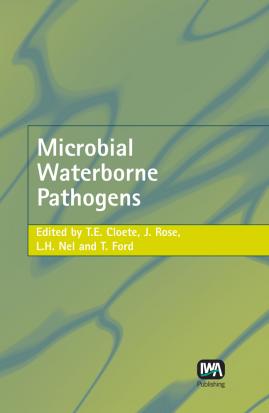 |
Microbial Waterborne Pathogens
Microbial Waterborne Pathogens
Editor(s): E Cloete, J Rose, LH Nel, T Ford,

In the developed world, the connection between water, hygiene and health is taken for granted. However, for the less fortunate majority, access to potable water is non-existent and remains a daily struggle. Bacteria, viruses and parasites in contaminated water cause water borne disease. Of concern are the so-called new emerging pathogens, contributing to water borne disease, one of the biggest human tragedies, killing more than 5 million people each year. About 2.3 billion people suffer from diseases linked to contaminated water and some 6,000 people die daily as a result of this. Some 60% of all infant mortality worldwide is linked to water-related infectious and parasitic diseases.
Treating water before use can eliminate most of these waterborne pathogens. The essential starting point is knowledge of the disease-causing organisms, the detection techniques, and the epidemiology, which is the focus of this book.
Microbial Waterborne Pathogens provides up-to-date coverage of waterborne microbial pathogens including traditional and emerging pathogens and the latest molecular detection techniques.
The link between climate and disease is covered in the book and indicates future approaches to dealing with this important area as we face the effects of global climate change
All the existing and emerging pathogens including bacteria, viruses and protozoa are reviewed. The characteristics of each organism are discussed in detail as well as their epidemiology. Methods for the detection of these pathogens, traditional and new are presented.
Microbial Waterborne Pathogens provides students, academics and practitioners with a complete reference book on the microbiological quality and safety of potable water.
Publication Date: 31/08/2004ISBN13: 9781843390558eISBN: 9781780402826Pages: 256 |
Print:
|